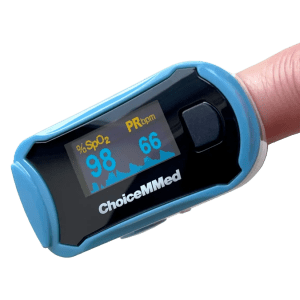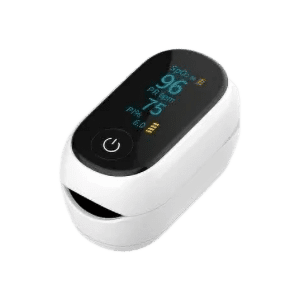In today’s health-conscious society, the importance of having the right tools at home to monitor one’s health cannot be overstated. Among these, pulse oximeters have emerged as a crucial device for keeping tabs on oxygen saturation levels and pulse rates. This simple, yet powerful tool can provide invaluable insights into your respiratory and cardiovascular health from the comfort of your home.
Why Monitor Oxygen Saturation and Pulse Rate?
Oxygen saturation (SpO2) and pulse rate are vital health indicators that tell us how well our body is functioning. Oxygen saturation refers to the percentage of hemoglobin in the bloodstream that is saturated with oxygen, which is essential for the cells in our body to produce energy. The pulse rate, on the other hand, indicates the number of times your heart beats per minute, reflecting your heart’s health and overall fitness.
Monitoring these parameters is particularly important for individuals with respiratory conditions such as asthma or COPD, people recovering from COVID-19, athletes seeking to optimize their performance, and anyone interested in a proactive approach to health monitoring.
The Science Behind Pulse Oximeters
Pulse oximeters work by passing beams of light through the blood in your finger to measure oxygen saturation and pulse rate. This non-invasive method provides immediate feedback on how effectively oxygen is being transported to the extremities furthest from the heart, such as the legs and arms.
Understanding how to interpret the readings from your pulse oximeter is crucial. A healthy individual typically has an oxygen saturation level of 95% to 100%. Readings below this range could indicate a need for medical attention or adjustments in your health routine.
Reading Your Pulse Oximeter: What the Numbers Mean
When using a pulse oximeter, it’s important to ensure that the device is used correctly to get accurate readings. Factors such as cold hands or improper placement can affect the accuracy. A reading that consistently shows an oxygen saturation level below 95% warrants a consultation with a healthcare provider, as it could be a sign of a serious health issue.

Choosing Your Home Pulse Oximeter
With various models available, choosing the right pulse oximeter for home use is crucial. Features to consider include accuracy, ease of use, display clarity, and durability. NZMDL offers a selection of high-quality pulse oximeters, such as the Choicemmed Finger Pulse Oximeter and the Fingertip Pulse Oximeter Portable SpO2 Machine OLED Screen, both designed to meet the needs of various users, from healthcare professionals to fitness enthusiasts.

For those interested in exploring more options, visit our home pulse oximeter tag page to find the perfect device to suit your needs.
Conclusion
Incorporating a pulse oximeter into your home health monitoring toolkit can play a vital role in maintaining or improving your health. By providing real-time feedback on your oxygen saturation and pulse rate, these devices empower you to take proactive steps towards your health and well-being. Whether you’re managing a chronic condition, aiming to improve your athletic performance, or simply keeping an eye on your health metrics, NZMDL’s range of pulse oximeters offers the reliability and accuracy you need. Explore our selection today and take the first step towards better health monitoring at home.
